Motion Capture Movies have revolutionized the film industry. This technology, also known as mocap, allows filmmakers to combine digital characters with real human movements, creating stunning visual effects. From films like Avatar to The Lord of the Rings, mocap has reshaped the way movies are made. But this is just the beginning, as AI and machine learning are setting the stage for a whole new era in filmmaking. Join us as we explore the impact of Motion Capture Movies and their future in the industry.
1. What are Motion Capture Movies?
Motion Capture Movies are films that utilize motion capture technology to record actors’ movements and transfer them to digital characters. This technique allows filmmakers to create realistic and natural animations.
Differences Between Motion Capture in Films and Traditional Films
In traditional filmmaking, visual effects are typically created using hand-drawn animation or CGI, which is time-consuming and expensive. Motion Capture Film, on the other hand, captures real-life movements, making the animation process faster and more lifelike. This difference is evident in films like Avatar, where real actors bring digital characters to life.
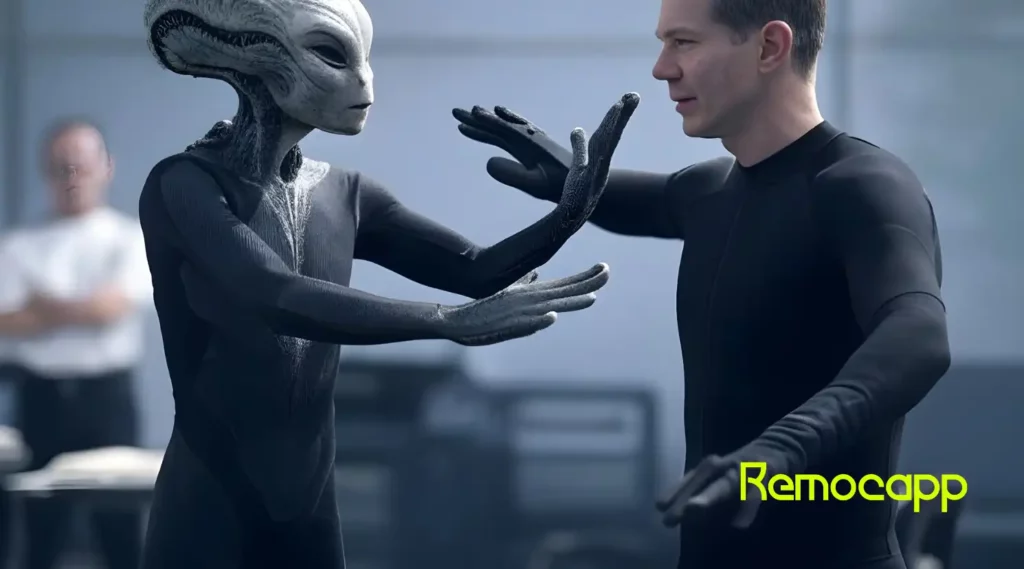
2. Key Advancements in Motion Capture films
The use of motion capture in cinema dates back to the 1990s, but it gained widespread adoption in the 2000s. Some key milestones include:
- The Lord of the Rings (2001-2003): The introduction of mocap in creating Gollum.
- Avatar (2009): Advancements in facial motion capture and CGI integration.
- Planet of the Apes (2011-2017): Realistic animal motion using mocap.
Breakthroughs in AI and machine learning are also making Motion Capture Movies more accessible and efficient. One of the most notable advancements is the Markerless Motion capture in Film Production, which allows actors to perform without wearing traditional motion capture suits.
3. New Technologies in Motion Capture Movies
Recent advancements in this field include:
- AI and Machine Learning: Reducing the need for sensors and improving motion accuracy.
- Advanced Software like Remocapp: Enabling motion capture without expensive equipment.
- Augmented Reality (AR) and Virtual Reality (VR): Enhancing digital environments for immersive storytelling.
4. Benefits of Motion Capture Movies
- High realism – Accurately captures actors’ movements and emotions.
- Cost reduction in visual effects – Replaces expensive manual animation techniques.
- Enables the creation of impossible characters – Such as Gollum or Caesar in Planet of the Apes.
- Faster production time – More efficient than traditional animation and CGI methods.
- Flexibility in editing and post-production – Allows movement modifications without re-shooting.
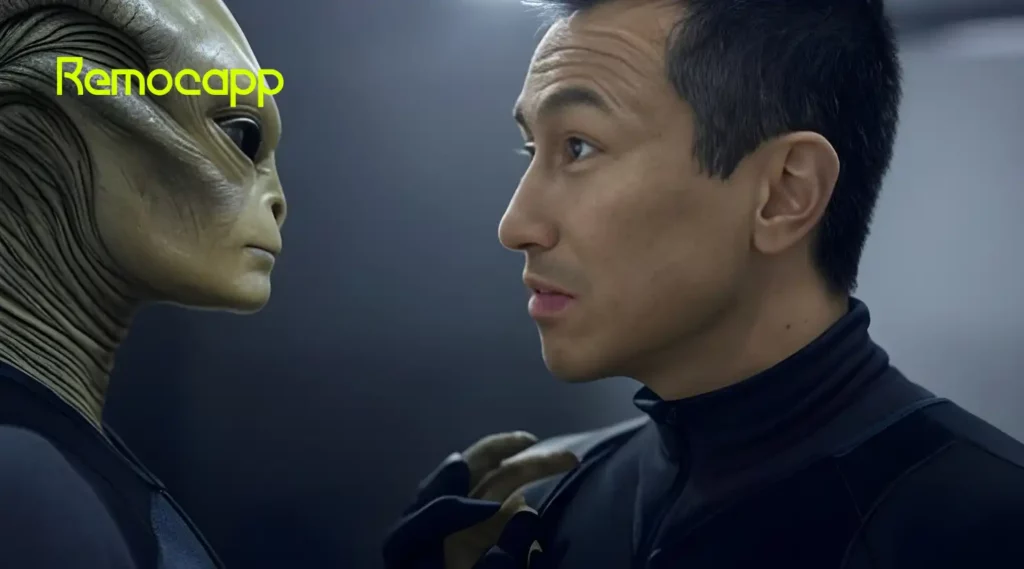
5. The Future of Motion Capture Movies
The future of Motion Capture Movies looks promising with AI advancements and AR/VR integration:
- Improved capture quality and reduced costs
- Greater role of AI in creating digital characters
- Possibility of fully digital films without human actors
Conclusion
Motion capture has blurred the lines between reality and animation, allowing filmmakers to tell extraordinary stories with stunning visual effects. With recent advancements, especially in AI and machine learning, this technology is becoming more accessible and continues to shape the future of cinema.
FAQ
Actors perform using motion capture systems, and their movements are transferred to digital characters for animation.
A Motion Capture Film uses real-life movements for animation, while CGI is typically designed manually.
With AI advancements, creating fully digital characters is possible, but human acting will still play a crucial role in emotional and expressive performances.
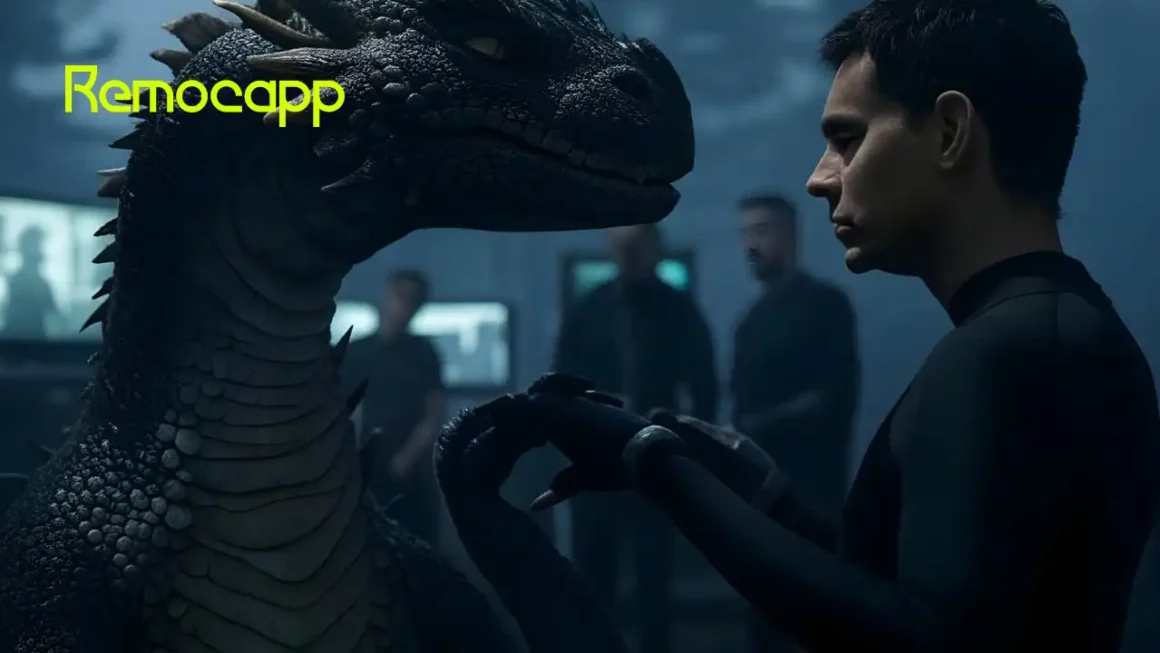
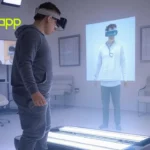



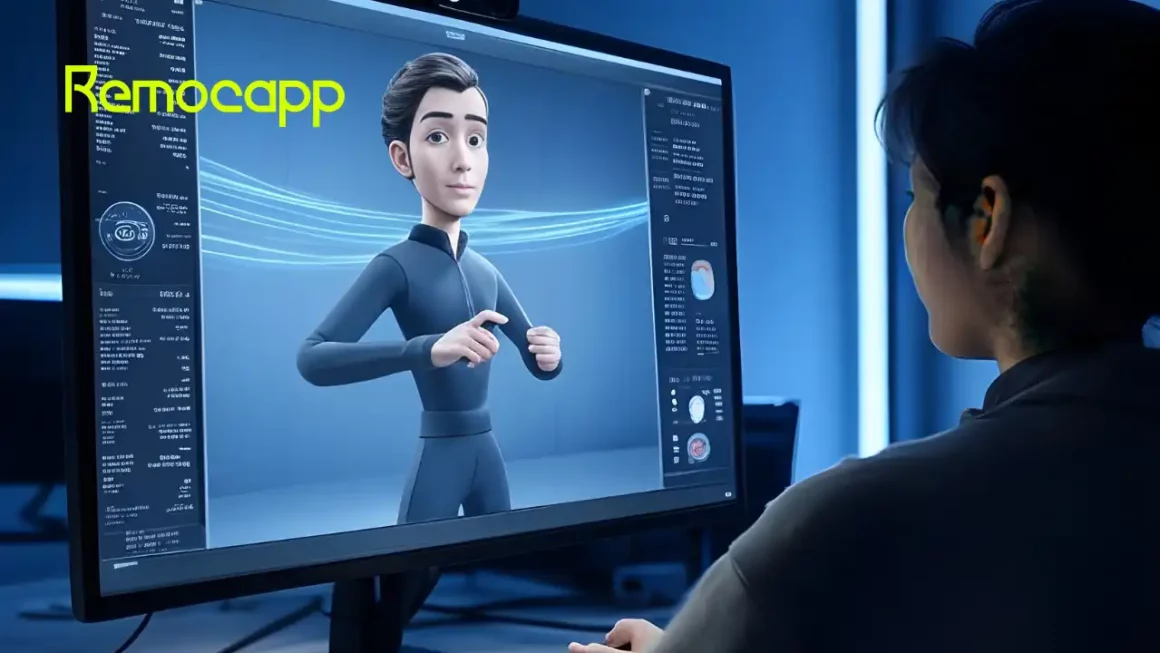
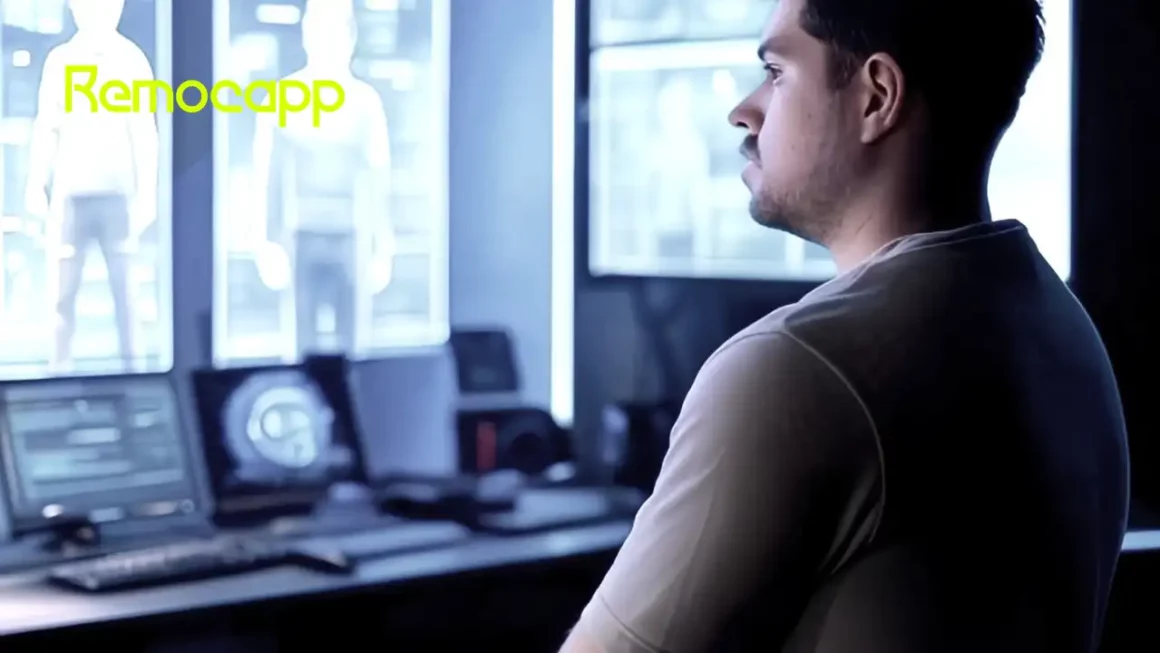
Motion Capture in Films: The impact on the film industry and future trends
Motion capture, or mocap, has completely changed the game when it comes to making movies and animations. It allows filmmakers and animators to create incredibly lifelike characters by capturing real human movement and translating it into digital animations. The capabilities made possible by motion capture in films are unprecedented, blending live-action with CGI in a way that’s never been done before.
From blockbuster hits like Avatar to animated features, this technology has become a go-to tool for creating visually stunning stories. Mocap doesn’t just save time and money—it opens up a world of creativity. And with even more exciting advancements on the horizon, the future of film and animation is only going to keep getting better.
How Motion Capture Helps Make Movies and Animation
Motion capture technology has made it easier to bring complex characters and action sequences to life in both movies and animation. The process typically begins with actors wearing a special motion capture suit for animation. These devices track the actors’ movements, which are then transferred to digital characters. However as you will learn later in this article, recent developments in AI have opened new possibilities for mocap users to work without markers or suits such as the services provided by Remocapp.
This AI-driven software can perform facial motion capture and body motion capture simultaneously, in real time, using only two regular webcams, signaling the AI-based future trends in mocap. Such AI-driven software has enabled many indie creators to just grab two webcams, click on a motion capture download link, and start capturing within minutes.
In movies like The Lord of the Rings and The Jungle Book, mocap helped create iconic characters like Gollum and Shere Khan, whose facial expressions and body movements were directly inspired by human performances. Motion-captured animated movies have been just as astonishing as the results we have seen with the use of motion capture in films.
Even in animation, mocap allows for more fluid and lifelike motion, whether it’s a human character or a fantastical creature. Consider blockbusters like The Adventures Of Tintin, The Polar Express, Happy Feet, Beowulf, or A Christmas Carol and it isn’t hard to see why one cannot overestimate the role of mocap in such successful projects. Thanks to mocap, filmmakers can focus more on the story and character development, knowing the technology will faithfully reproduce their vision. This combination of live performance with digital animation makes the storytelling process more flexible and powerful.
The Motion Capture Process
In movies, both marker-based and markerless technology are used to bring characters to life. Marker-based mocap involves placing small reflective markers on the actor’s body, which are tracked by multiple cameras set up around the performance space. These cameras capture the actor’s movements from different angles. The data is then processed and translated into a digital skeleton, which animators can apply to CGI characters. This method, used in motion-captured films like The Lord of the Rings for Gollum, requires precise calibration and specialized cameras to ensure smooth data capture and high accuracy.
The markerless system, on the other hand, eliminates the need for markers. Instead, advanced software and cameras track the actor’s body and facial movements using AI algorithms. This system is quicker to set up since it doesn’t require attaching physical markers, making it more flexible for spontaneous shoots. Markerless systems are ideal for capturing large-scale environments or quick captures where attaching markers would be impractical. Both techniques are essential in modern filmmaking, offering different benefits depending on the complexity and style of the project
Importance of Motion Capture in Film Industry
The impact of motion capture in film industry is nothing short of a miraculous revolution as it has enabled far more realistic and detailed character animations. Since its early adoption in the 1990s, particularly in movies like The Lord of the Rings with Gollum, mocap has allowed filmmakers to capture the nuances of human movement and facial expressions. This has led to more convincing CGI characters and seamless integration between live-action and animated elements. The use of motion capture in films also reduces the need for extensive hand animation, which can be time-consuming and expensive.
Motion capture applications are diverse and complex but the most typical use of motion capture in films is to create lifelike creatures or enhance action scenes. Blockbusters rely heavily on this technology, but indie filmmakers can benefit too. With advancements in affordable and accessible mocap solutions, independent creators now have the tools to bring their creative visions to life, even on smaller budgets. This opens new possibilities for indie filmmakers to add high-quality CGI elements without needing big studio resources.
Best Motion Capture Animation Movies
The use of motion capture in films and motion capture in animations has proved to be a groundbreaking tool, something that was dismissed by many Hollywood studios only a decade ago. Today, there is just no competing with mocap as far as realistic human movements are concerned; here are some of the most successful examples of motion capture in movies:
Gollum – The Lord of the Rings (2001-2003)
Gollum, portrayed by Andy Serkis, was one of the first and most iconic uses of mocap technology. The character’s subtle expressions and movements helped push the boundaries of what was possible in CGI at the time.
King Kong – King Kong (2005)
Once again, Andy Serkis delivered a stunning performance as the giant ape, King Kong. The emotional depth and lifelike movement of the creature were achieved using state-of-the-art mocap technology, cementing Serkis as a mocap legend.
Na’vi – Avatar (2009)
James Cameron’s Avatar is one of the most famous examples of mocap, where actors’ facial and body movements were captured to bring the Na’vi characters to life. The use of 3D mocap took the technology to new heights, revolutionizing CGI in cinema.
Caesar – Planet of the Apes trilogy (2011-2017)
Serkis once again pushed the envelope with his role as Caesar. The trilogy’s mocap allowed the apes to exhibit realistic emotions and expressions, driving the story and characters forward in a unique and immersive way.
Hulk – The Avengers series (2012-present)
Mark Ruffalo’s portrayal of the Hulk utilizes both mocap for facial expressions and full-body movement. This approach allowed the character to appear far more nuanced and relatable than earlier CGI versions.
Smaug – The Hobbit (2013)
Benedict Cumberbatch’s portrayal of the dragon Smaug combined voice acting and motion capture to create a menacing yet charismatic antagonist. His full-body movement as the dragon added layers to the character’s ferocity.
Thanos – Avengers: Infinity War and Endgame (2018-2019)
Josh Brolin’s Thanos became one of the most memorable villains in cinematic history, largely due to the realistic mocap used to capture every nuance of his facial expressions, making the character both intimidating and strangely human.
Pikachu – Detective Pikachu (2019)
Ryan Reynolds’ mocap performance for Detective Pikachu added a level of charm and humor that made the character more dynamic and relatable, a rare combination in the realm of animation.
Each of these examples demonstrates how mocap continues to shape modern filmmaking, enhancing both storytelling and visual spectacle.
The Growing Role of Markerless Motion Capture in Films
What has been done by motion capture for animation is mind-blowing, but there has been one particular type of motion capture that has found special recognition in recent years. Markerless technology is rapidly transforming the animation industry by streamlining the filmmaking process. Unlike traditional marker-based systems, which require actors to wear cumbersome suits with reflective markers, markerless mocap uses advanced AI and computer vision to capture full-body and facial movements in real-time without any specialized equipment. This significantly reduces setup time, allowing filmmakers to focus more on performance and creativity rather than technical challenges. It also speeds up the post-production process, as there’s less data cleaning required.
Another major advantage of the markerless system is its flexibility, making high-quality animation accessible to a broader range of creators. Indie filmmakers and smaller studios, who may not have the budget for expensive marker-based systems, can now leverage this technology to create professional-grade animations. By lowering barriers to entry, markerless technology is democratizing animation production, opening doors to more innovative and diverse storytelling. This trend is set to grow, pushing the boundaries of what’s possible in animation.
Future Trends of Motion Capture in Films
The future of mocap in movies and animation looks incredibly exciting, with virtual reality (VR) and augmented reality (AR) poised to play a significant role. These immersive technologies could soon intersect with mocap to create more dynamic and interactive storytelling experiences. Imagine actors performing within a fully realized virtual world, allowing filmmakers to seamlessly blend live-action performances with virtual environments. Mocap data could drive both the character animations and how the audience interacts with these virtual worlds, pushing immersive filmmaking to new heights.
Another growing trend is the integration of AI and machine learning in mocap, which is expected to improve the accuracy and efficiency of capturing movements. With these advancements, we may soon see real-time, markerless technology becoming even more accessible to independent filmmakers and smaller studios. As this tech continues to evolve, the lines between animation, live-action, and interactive experiences will blur, leading to more innovative and diverse forms of entertainment.
Throughout the article we gave you a brief description of how motion capture technology has revolutionized the world of movies and animation, making previously unthinkable visual storytelling a reality. From iconic characters to realistic movements, mocap continues to push creative boundaries while streamlining the production process. With advancements in markerless systems, AI, and the potential for VR and AR integration, the future of mocap is brighter than ever. As it becomes more accessible to indie filmmakers and smaller studios, we can expect even more innovation in the years to come.
FAQ
1. What is motion capture in film?
Motion capture records actor movements and facial expressions, transferring them to digital characters. This tech helps create more lifelike characters like the ones we’ve seen in films like Avatar and The Lord of the Rings.
2. How is motion capture used in movies?
Motion capture is used in movies to record the movements of actors and translate them into digital characters, allowing for realistic animations. It captures body, facial, and hand movements using sensors or markers placed on actors, which are then mapped onto CGI characters in post-production. This technology enables filmmakers to create lifelike creatures, enhance special effects, and seamlessly blend live-action with digital elements, adding depth and realism to complex scenes.
3. Can independent filmmakers use motion capture?
Yes! With advancements in affordable markerless systems, indie filmmakers can now use motion capture to produce high-quality CGI without the big budgets traditionally required, leveling the playing field in animation and filmmaking.
Motion capture, or mocap, has completely changed the game when it comes to making movies and animations. It allows filmmakers and animators to create incredibly lifelike characters by capturing real human movement and translating it into digital animations. The capabilities made possible by motion capture in films are unprecedented, blending live-action with CGI in a way that’s never been done before.
From blockbuster hits like Avatar to animated features, this technology has become a go-to tool for creating visually stunning stories. Mocap doesn’t just save time and money—it opens up a world of creativity. And with even more exciting advancements on the horizon, the future of film and animation is only going to keep getting better.
How Motion Capture Helps Make Movies and Animation
Motion capture technology has made it easier to bring complex characters and action sequences to life in both movies and animation. The process typically begins with actors wearing a special motion capture suit for animation. These devices track the actors’ movements, which are then transferred to digital characters. However as you will learn later in this article, recent developments in AI have opened new possibilities for mocap users to work without markers or suits such as the services provided by Remocapp.
This AI-driven software can perform facial motion capture and body motion capture simultaneously, in real time, using only two regular webcams, signaling the AI-based future trends in mocap. Such AI-driven software has enabled many indie creators to just grab two webcams, click on a motion capture download link, and start capturing within minutes.
In movies like The Lord of the Rings and The Jungle Book, mocap helped create iconic characters like Gollum and Shere Khan, whose facial expressions and body movements were directly inspired by human performances. Motion-captured animated movies have been just as astonishing as the results we have seen with the use of motion capture in films.
Even in animation, mocap allows for more fluid and lifelike motion, whether it’s a human character or a fantastical creature. Consider blockbusters like The Adventures Of Tintin, The Polar Express, Happy Feet, Beowulf, or A Christmas Carol and it isn’t hard to see why one cannot overestimate the role of mocap in such successful projects. Thanks to mocap, filmmakers can focus more on the story and character development, knowing the technology will faithfully reproduce their vision. This combination of live performance with digital animation makes the storytelling process more flexible and powerful.
The Motion Capture Process
In movies, both marker-based and markerless technology are used to bring characters to life. Marker-based mocap involves placing small reflective markers on the actor’s body, which are tracked by multiple cameras set up around the performance space. These cameras capture the actor’s movements from different angles. The data is then processed and translated into a digital skeleton, which animators can apply to CGI characters. This method, used in motion-captured films like The Lord of the Rings for Gollum, requires precise calibration and specialized cameras to ensure smooth data capture and high accuracy.
The markerless system, on the other hand, eliminates the need for markers. Instead, advanced software and cameras track the actor’s body and facial movements using AI algorithms. This system is quicker to set up since it doesn’t require attaching physical markers, making it more flexible for spontaneous shoots. Markerless systems are ideal for capturing large-scale environments or quick captures where attaching markers would be impractical. Both techniques are essential in modern filmmaking, offering different benefits depending on the complexity and style of the project.
Importance of Motion Capture in Film Industry
The impact of motion capture in film industry is nothing short of a miraculous revolution as it has enabled far more realistic and detailed character animations. Since its early adoption in the 1990s, particularly in movies like The Lord of the Rings with Gollum, mocap has allowed filmmakers to capture the nuances of human movement and facial expressions. This has led to more convincing CGI characters and seamless integration between live-action and animated elements. The use of motion capture in films also reduces the need for extensive hand animation, which can be time-consuming and expensive.
Motion capture applications are diverse and complex but the most typical use of motion capture in films is to create lifelike creatures or enhance action scenes. Blockbusters rely heavily on this technology, but indie filmmakers can benefit too. With advancements in affordable and accessible mocap solutions, independent creators now have the tools to bring their creative visions to life, even on smaller budgets. This opens new possibilities for indie filmmakers to add high-quality CGI elements without needing big studio resources.
Best Motion Capture Animation Movies
The use of motion capture in films and motion capture in animations has proved to be a groundbreaking tool, something that was dismissed by many Hollywood studios only a decade ago. Today, there is just no competing with mocap as far as realistic human movements are concerned; here are some of the most successful examples of motion capture in movies:
Gollum – The Lord of the Rings (2001-2003)
Gollum, portrayed by Andy Serkis, was one of the first and most iconic uses of mocap technology. The character’s subtle expressions and movements helped push the boundaries of what was possible in CGI at the time.
King Kong – King Kong (2005)
Once again, Andy Serkis delivered a stunning performance as the giant ape, King Kong. The emotional depth and lifelike movement of the creature were achieved using state-of-the-art mocap technology, cementing Serkis as a mocap legend.
Na’vi – Avatar (2009)
James Cameron’s Avatar is one of the most famous examples of mocap, where actors’ facial and body movements were captured to bring the Na’vi characters to life. The use of 3D mocap took the technology to new heights, revolutionizing CGI in cinema.
Caesar – Planet of the Apes trilogy (2011-2017)
Serkis once again pushed the envelope with his role as Caesar. The trilogy’s mocap allowed the apes to exhibit realistic emotions and expressions, driving the story and characters forward in a unique and immersive way.
Hulk – The Avengers series (2012-present)
Mark Ruffalo’s portrayal of the Hulk utilizes both mocap for facial expressions and full-body movement. This approach allowed the character to appear far more nuanced and relatable than earlier CGI versions.
Smaug – The Hobbit (2013)
Benedict Cumberbatch’s portrayal of the dragon Smaug combined voice acting and motion capture to create a menacing yet charismatic antagonist. His full-body movement as the dragon added layers to the character’s ferocity.
Thanos – Avengers: Infinity War and Endgame (2018-2019)
Josh Brolin’s Thanos became one of the most memorable villains in cinematic history, largely due to the realistic mocap used to capture every nuance of his facial expressions, making the character both intimidating and strangely human.
Pikachu – Detective Pikachu (2019)
Ryan Reynolds’ mocap performance for Detective Pikachu added a level of charm and humor that made the character more dynamic and relatable, a rare combination in the realm of animation.
Each of these examples demonstrates how mocap continues to shape modern filmmaking, enhancing both storytelling and visual spectacle.
The Growing Role of Markerless Motion Capture in Films
What has been done by motion capture for animation is mind-blowing, but there has been one particular type of motion capture that has found special recognition in recent years. Markerless technology is rapidly transforming the animation industry by streamlining the filmmaking process. Unlike traditional marker-based systems, which require actors to wear cumbersome suits with reflective markers, markerless mocap uses advanced AI and computer vision to capture full-body and facial movements in real-time without any specialized equipment. This significantly reduces setup time, allowing filmmakers to focus more on performance and creativity rather than technical challenges. It also speeds up the post-production process, as there’s less data cleaning required.
Another major advantage of the markerless system is its flexibility, making high-quality animation accessible to a broader range of creators. Indie filmmakers and smaller studios, who may not have the budget for expensive marker-based systems, can now leverage this technology to create professional-grade animations. By lowering barriers to entry, markerless technology is democratizing animation production, opening doors to more innovative and diverse storytelling. This trend is set to grow, pushing the boundaries of what’s possible in animation.
Future Trends of Motion Capture in Films
The future of mocap in movies and animation looks incredibly exciting, with virtual reality (VR) and augmented reality (AR) poised to play a significant role. These immersive technologies could soon intersect with mocap to create more dynamic and interactive storytelling experiences. Imagine actors performing within a fully realized virtual world, allowing filmmakers to seamlessly blend live-action performances with virtual environments. Mocap data could drive both the character animations and how the audience interacts with these virtual worlds, pushing immersive filmmaking to new heights.
Another growing trend is the integration of AI and machine learning in mocap, which is expected to improve the accuracy and efficiency of capturing movements. With these advancements, we may soon see real-time, markerless technology becoming even more accessible to independent filmmakers and smaller studios. As this tech continues to evolve, the lines between animation, live-action, and interactive experiences will blur, leading to more innovative and diverse forms of entertainment.
Throughout the article we gave you a brief description of how motion capture technology has revolutionized the world of movies and animation, making previously unthinkable visual storytelling a reality. From iconic characters to realistic movements, mocap continues to push creative boundaries while streamlining the production process. With advancements in markerless systems, AI, and the potential for VR and AR integration, the future of mocap is brighter than ever. As it becomes more accessible to indie filmmakers and smaller studios, we can expect even more innovation in the years to come.
With the growing role of markerless motion capture, how do you see this impacting the accessibility of animation for indie filmmakers? Will it lead to more diverse storytelling in the industry?
The rise of markerless motion capture certainly opens up opportunities for indie filmmakers. By reducing the need for expensive equipment, it democratizes animation production, enabling smaller studios to create high-quality animations. This is likely to lead to more diverse and innovative storytelling, as creators from various backgrounds can now access the tools to bring their visions to life.
With motion capture technology continuously evolving, do you think we’ll soon see even more realistic CGI characters that blur the line between animation and live-action? How might this affect storytelling in both animated and live-action films?
Absolutely! As motion capture technology advances, we can expect characters that seem even more lifelike. This will open up new storytelling possibilities, especially as the boundaries between animation and live-action become more seamless, allowing filmmakers to explore deeper emotional connections and more immersive worlds.
https://remocapp.com/